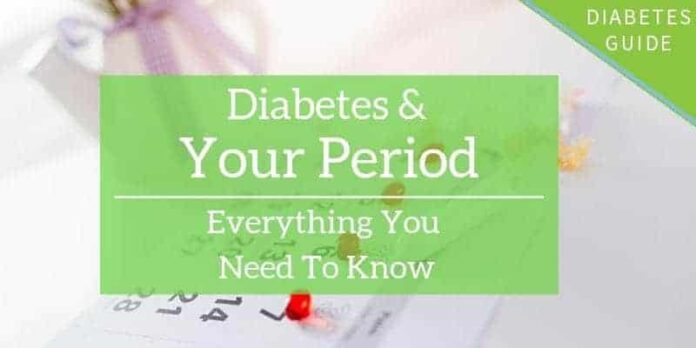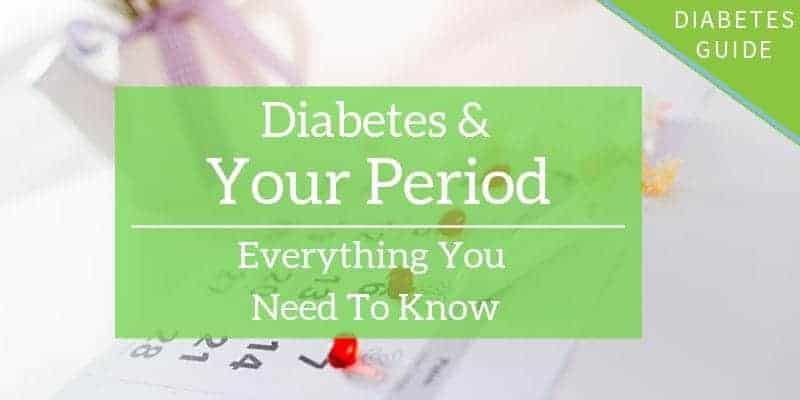Like so many other hormones produced by the human body, the fluctuating hormone levels of your menstruation cycle can have a significant impact on your blood sugars and your insulin needs.
Unfortunately, the reproductive-related hormones in the female body are much like a moving target. Throughout your 28-day cycle, your hormone levels are changing, making it difficult to predict when and by how much you may need to adjust your insulin doses to compensate.
In this article, we’ll cover everything you need to know in order to better manage your diabetes around your period.
Diabetes & your period
While managing your blood sugar levels around your menstrual cycle is never going to be an exact science, there are things you can do and be aware of that will make it much easier.
The key is to check your blood sugar often — especially in the days right before your period starts and during your period — to pinpoint when your insulin doses will need the biggest adjustments.
Let’s take a look at 8 aspects of menstruation to better manage your blood sugars levels during your period.
There are 4 phases in the menstrual cycle and 4 major hormones impacting your diabetes
“Even when you are not menstruating [bleeding] your body’s hormone levels are gradually changing daily as it prepares your body for the potential of pregnancy,” ” explains Jennifer C. Smith, RD and CDE, and co-author of Pregnancy with Type 1 Diabetes.
There are four phases that your body cycles through:
- Menstruation (days 1 thru 10): This is the start of your 28-day (on average) monthly cycle when your period begins.
- Follicular phase (days 11 thru 14): During this phase, your body is preparing for ovulation which is at the end of this 2-week period when your body releases an egg for the intention of becoming pregnant. If you are on birth control, your body will not release an egg.
- Ovulatory phase (days 15 to 20): This phase occurs at the mid-point of your entire menstrual cycle. The dominant follicle attached to your uterus triggers a large spike of luteinizing hormone. This hormone is actually produced by the brain. This phase shouldn’t have a significant impact on your blood sugar levels.
- Luteal phase (days 21 to 28): This phase is immediately after your body ovulates — which means it has released an egg and continues until the start of your period. The lining of your uterus will grow thicker during this phase in preparation for pregnancy. When you don’t become pregnant, that lining then sheds itself at the end of the Luteal phase which is, of course, what appears as blood and is the start of your period.
There are four hormones that regulate your entire menstrual cycle:
- Progesterone
- Estrogen
- Luteinizing Hormone (LH)
- Follicle Stimulating Hormone (FSH)
This includes if you are taking birth control because these fluctuating hormone levels play a critical role in managing your entire well-being.
All of these hormones raise your blood sugar by creating insulin resistance, not much different from the way other non-reproductive hormones like cortisol affect your blood sugars.
As a woman, you need these reproductive hormones for things as simple as managing your appetite, your heart rate, your skin, the amount of hair on your body, sex drive, vaginal lubrication, and your body weight.
The first day of your period will be the most challenging
“Your 28-day cycle (although it can be longer for some people) starts with the start of your period,” explains Smith.
Most women will see a significant spike in their blood sugars on (or in the hours or day before) the start of their period. This is the result of increased hormone levels that enable your body to shed the lining of your uterine wall (which is what appears as “blood” during your period).
Smith says you may need to set a temporary basal rate with as much as 25 to 40 percent increase in insulin that day. For those taking long-acting insulin, you’ll need to increase your basal insulin dose the day of or night before your period by 25 to 40 percent.
For example, if you take 10 units of Lantus on a normal day, you would calculate 10 x 1.25 = 12.5. This means I would add 2.5 units to my long-acting insulin dose on the day of or day before my period starts.
NOTE: Of course, work with your healthcare team whenever making new changes to your insulin dosing regimen.
The tricky part, of course, is that we’re not always positive when our period is going to start. And you don’t want to increase your basal insulin that significantly if your body doesn’t need it because it would result in low blood sugars.
If your period isn’t extremely consistent and reliable in terms of scheduling, you’ll likely need to wait until your experiencing typical symptoms (cramping, etc.) or until you actually see that you are bleeding before quickly increasing your doses.
Your insulin needs should return to normal the day after your period starts
“That insulin resistance should return to your normal after the first day of your period,” explains Smith, which means you can likely adjust your insulin doses back to your normal amounts.
The remainder of your actual period (when you are bleeding) should continue to be fairly insignificant in terms of blood sugar levels and insulin resistance.
During ovulation, your blood sugars and insulin resistance levels may rise
“The ovulatory cycle can definitely create some unpredictable high blood sugar levels and insulin resistance,” explains Smith.
When your body is preparing to release an egg approximately 14 to 16 days after the start of your last period, nearly all of your hormone levels rise quickly, creating a brief but significant spike in blood sugar levels.
Similar to the start of your period, you may need a 25 to 40 percent increase in your background insulin doses.
Fortunately, this cumbersome phase only lasts for as long as 2 to 3 days in most women. That being said, it’s still very hard to pinpoint and predict, which means you’ll need to keep a close eye on your menstruation calendar.
If you can match-up your sudden high blood sugars with the days on the calendar during which your body is preparing for ovulation, you’ll feel far less frustrated with those seemingly irrational high blood sugars.
You may be more insulin resistant during the few days before your next period
As your body prepares for your next period, you may notice a bit of insulin resistance during the last few days before it starts.
Some women may see insulin resistance during the entire week before the start of their period, and others may not notice any insulin resistance or stubborn high blood sugar levels at all.
Use a period tracker app to help manage diabetes around your period
There are so many free period tracking (or “period calendar”) apps these days. They all serve the same purpose: to help you pinpoint when your body is most likely ovulating and when your period is going to start.
Usually, a young or grown woman doesn’t need to track her ovulation and menstrual calendar this closely until she’s trying to get pregnant. As women with diabetes, it serves an entirely different purpose and can be very helpful.
The more consistently you use it, the more accurate the information will be which will help you anticipate those tedious blood sugar fluctuations, too.
Open your “Apps Store” application on your smartphone (or use Google for one to use on your computer), and choose any of the top few free results. It will likely assume your menstrual cycle is 28-days from start to finish (the start of your period until the day before your next period).
If you track your period consistently for 3 months, you can see if your body indeed follows a 28-day cycle or if it’s possibly a little longer. Then adjust the settings in the app (for example changing a 28-day cycle to a 30-day cycle).
If you notice your cycle is longer than 35 days, inform your healthcare team immediately as this can be a sign of other problems.
Be patient — it’s nearly impossible to juggle your insulin needs around these hormones perfectly
“Be patient,” Smith encourages. “If you can identify patterns in your blood sugar levels and insulin needs based on your menstrual calendar, that’s great. If not, do the best you can to react quickly when you do notice your blood sugars are more resistant and running higher.”
And of course, take good notes! If you increased your basal rate or long-acting insulin dose from 14 units to 18 units last month — and it worked well for your blood sugar goals — be sure to write that down so you can refer to it next month!
Managing diabetes is never easy and it’s never perfect. Take a deep breath, do the best you can, and never stop trying to learn more about your body’s needs as a person with diabetes.
If you found this guide to diabetes and periods helpful, please sign up for our newsletter (and get a sign-up bonus) in the form below. We send out a weekly newsletter with the latest posts and recipes from Diabetes Strong.


